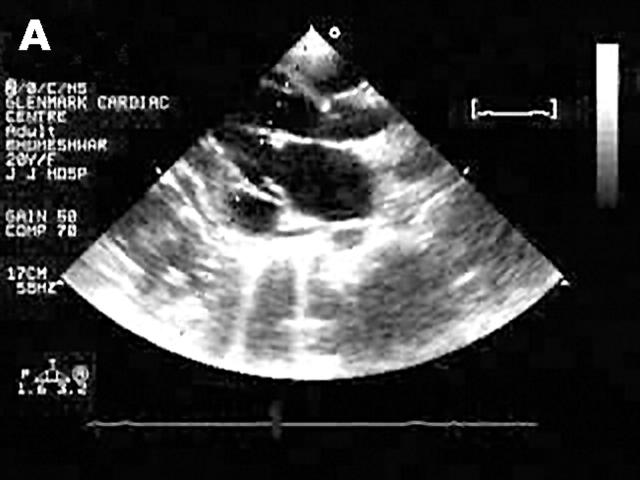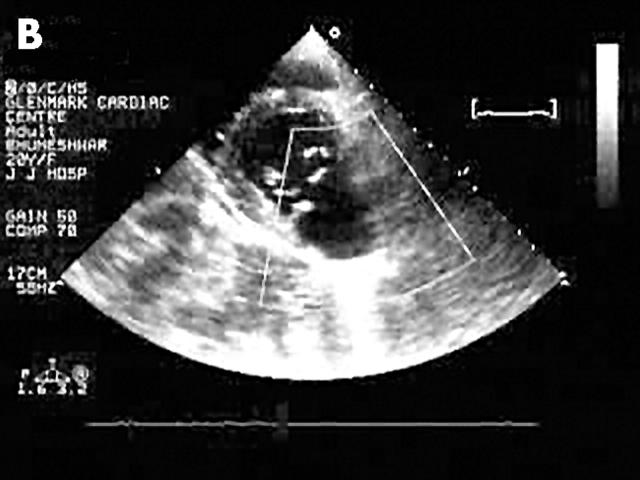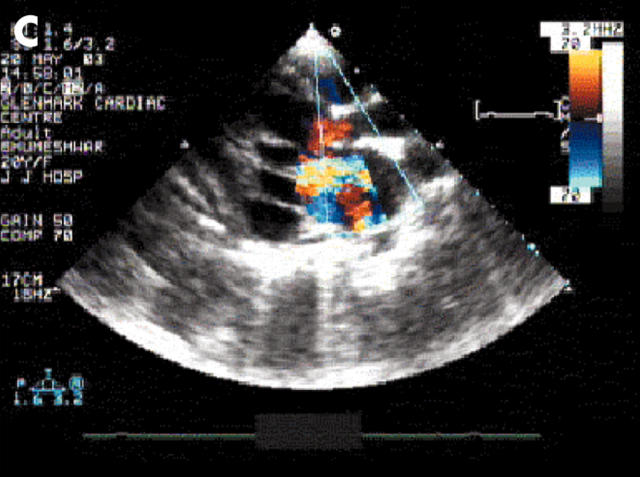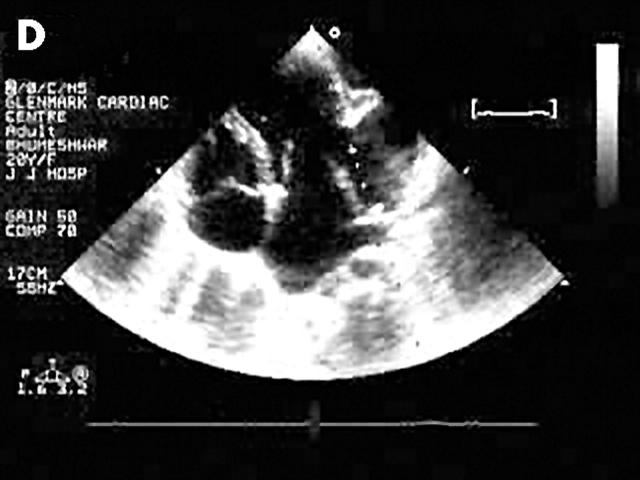A 12 year old Indian boy presented with a history of progressively worsening exertional dyspnoea. Clinical examination revealed left heart failure and mitral regurgitation. Echocardiography showed a large, submitral aneurysm arising immediately below the posterior mitral leaflet. Colour Doppler flow imaging demonstrated systolic flow into the aneurysm and mitral regurgitation. The mechanism for the latter was interference of the aneurysm with posterior mitral leaflet function.
Submitral left ventricular aneurysm is a cardiac pathology widely recognised, but relatively unknown, occurring almost exclusively in African black patients. Although this idea of racial prevalence still exists, cases have been described in patients of all the races including, black, white, and yellow races and also in Brazilian Indians. It was described in 1812 by Corvisart and, since this time, around 100–120 cases of these aneurysms have been reported. They are thought to be aneurysms caused by a congenital defect in the posterior portion of the mitral annulus, and may produce symptoms through diastolic overload (by virtue of their volume or by causing mitral regurgitation), thromboembolism, arrhythmias, or compression of the left circumflex artery leading to ischaemic manifestations.
This particular patient had a successful surgical repair of the aneurysm along with mitral valve replacement.
Figure 1.
Parasternal long axis view showing the aneurysm just beneath the posterior mitral leaflet.
Figure 2.
Short axis view showing the aneurysm.
Figure 3.
Colour mitral Doppler showing significant mitral regurgitation.
Figure 4.
Apical four chamber view showing the aneurysm.






